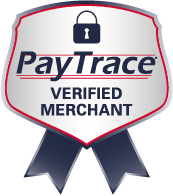For most brands that advertise online, banners are a staple. Not only is this campaign type inexpensive, but it’s supported by a wide range of display networks and marketing solutions. Because it’s been around for years, we also have tons of research that confirms the value of banner advertising as a digital strategy.
When it comes to banner advertising, though, brands have to be wary of inducing consumer blindness to the ads. “Banner blindness” is a real development that occurs when online consumers become used to seeing banner ads in particular places on a website. Their minds begin to recognize that space not as part of the website, but as an ad to be ignored. This has a significant negative affect on the banner’s performance–not just in terms of tangible clicks and engagement, but also regarding the brand awareness generated by such campaigns.
Fortunately, banner blindness is curable. Here are some tips brands can use to maximize consumer engagement with their banner campaigns.
Switch Up Ad Placement
All too often, banner ads show up in familiar places: the top and bottom of a web page, and along the right-hand site, for example. This practice has been in place for years, and that has contributed to the banner blindness effect. Consumers have developed a sense for where banner ads will be placed, and sometimes they write off content as being an advertisement even before they stop to look at the content itself.
One easy way to change that: changing the placement of ads. With a little creativity, brands can move outside of the box and start surprising consumers with banner ads in new locations. Whether this involves placing banners within text or other content, or even setting up welcome page interstitials that display a banner ad shortly before referring to the desired Web page.
Once these new placements are in place, campaign analytics can be used to track their success. Brands can see which strategies pan out, and which fall short of their goals.
Integrate Multiple Versions of Your Ad
The same ad, time and again, will quickly fade from consumer consciousness. For that reason, it makes little sense to hold down an ad space for too long. At some point, you’re simply going to see diminishing returns–fewer views, fewer clicks, less revenues to justify your spending.
One way to stretch out the value of those ad spaces is to run a campaign with multiple versions of a single ad. Try different selling points and see which ones get the greatest return from users. You might discover a surprise top-performer, which can help you build smarter campaigns going forward.
Don’t Get Stuck on One Design, Color Scheme
Multiple versions of an ad are one thing, but it’s also smart to craft entirely different ads that stand apart from other ad content. While branded logos offer important brand consistency, the primary features of a banner ad: the dominant colors and the design, for example–can and should be altered over time. A single ad only has so long of a life expectancy, and familiar design and color elements will only contribute to banner blindness.
Switching up a primarily blue ad and going with a hot pink scheme, for example, will stand out on a Web page and attract consumer eyes. That attention is what will ultimately deliver a strong ROI for your your banners, so freshness of content is of utmost importance. Keep in mind, too, that you aren’t just competing with your own ad content–you want to stand out against the ads published by other brands, too.
If you’re ready to step up your banner ad game, contact DBC Digital today.
Greg Sherwood is CEO of DBC Digital, a marketing agency based in Denver, Colorado. With over 30 years of marketing experience with traditional and inbound (internet) marketing, Greg helps mid-sized businesses get a better return on their marketing dollars.
You can reach Greg at (303) 357-5757 or at dbc@dbcdigital.com






